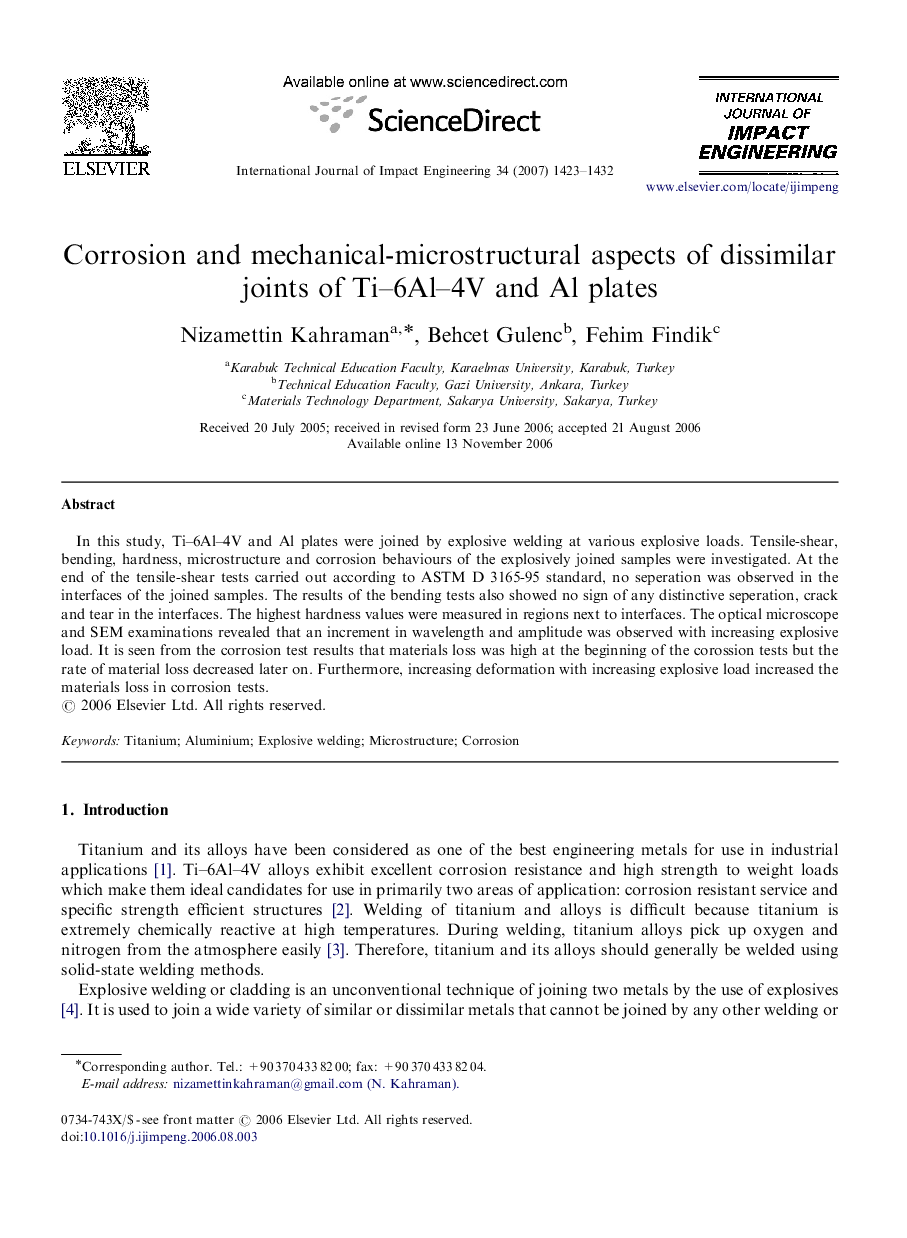| Article ID | Journal | Published Year | Pages | File Type |
|---|---|---|---|---|
| 783671 | International Journal of Impact Engineering | 2007 | 10 Pages |
In this study, Ti–6Al–4V and Al plates were joined by explosive welding at various explosive loads. Tensile-shear, bending, hardness, microstructure and corrosion behaviours of the explosively joined samples were investigated. At the end of the tensile-shear tests carried out according to ASTM D 3165-95 standard, no seperation was observed in the interfaces of the joined samples. The results of the bending tests also showed no sign of any distinctive seperation, crack and tear in the interfaces. The highest hardness values were measured in regions next to interfaces. The optical microscope and SEM examinations revealed that an increment in wavelength and amplitude was observed with increasing explosive load. It is seen from the corrosion test results that materials loss was high at the beginning of the corossion tests but the rate of material loss decreased later on. Furthermore, increasing deformation with increasing explosive load increased the materials loss in corrosion tests.
